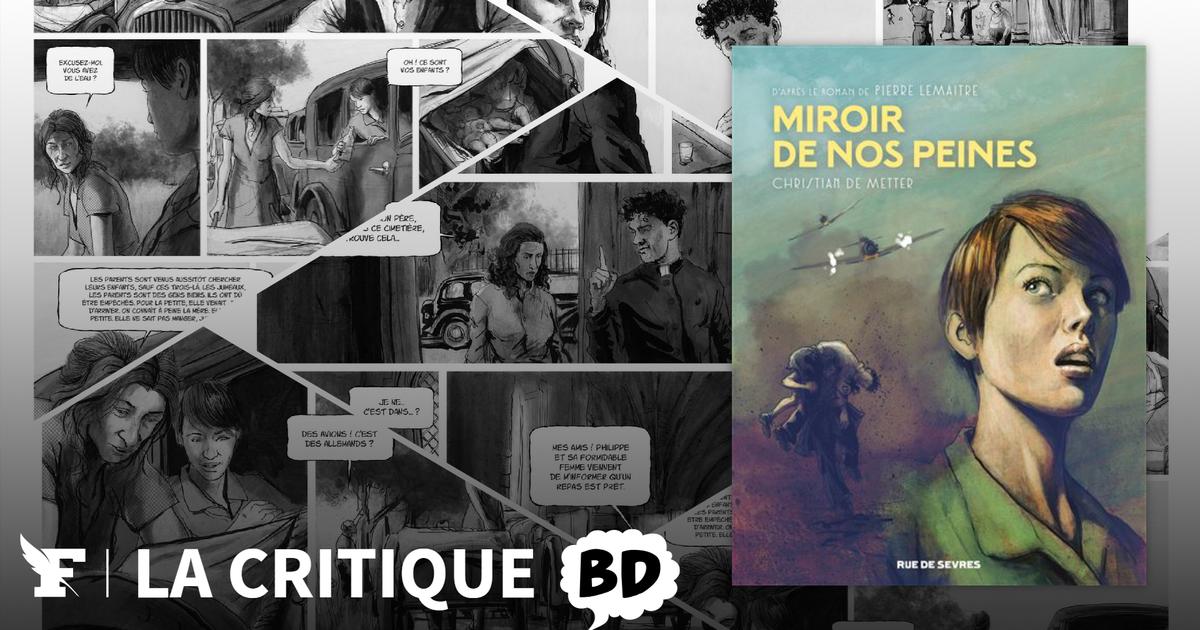Paris, 1940. Traumatized, Louise, a young teacher, runs naked through the streets of Paris. Meanwhile, in the east of France, Raoul, regimental commander of the French army, a schemer always on the lookout for a good move, manhandled Gabriel, his leader, too honest for his taste. Still in Paris, Fernand, a mobile guard in charge of supervising the destruction of entire bags of banknotes from the Bank of France, improvises himself as a burglar to satisfy the dream of his sick wife, while Désiré, a genius usurper with a big heart, manages to get hired as a spokesman for the Ministry of Information. There is nothing to suggest any connection between these four characters struggling in the troubled period of debacle and exodus.
To discover
- Order the complete set of Tintin's adventures
Miroir de nos peines closes Pierre Lemaitre's trilogy, Les enfants du catastrophe. And marks Christian de Metter's third adaptation of the novelist after those of Au revoir là-haut and Couleurs de l'incendie. In these first two volumes, the author already showed all his virtuosity by giving flesh to the characters and the story imagined by the writer.
Christian de Metter is a wonderful illustration of the despair of a civilization thrown into the chaos of exodus. Christian de Metter/ Rue de Sèvres.
In Miroir de nos peines, a choral tale exploring the troubled destinies of four characters against a backdrop of debacle and exodus, the cartoonist does not lose his talent as a portraitist and his mastery of staging. His breathless story, relayed by a virtuoso line, keeps the reader on the edge of their seats from the first to the last page. The cartoonist plunges us into the throes of the "phoney war" which came to an abrupt end with the German offensive and the rout of the French army, pushing civilians on the road to exodus. A period that the author evokes with its desperate struggles, its shenanigans of all kinds or state lies, all coupled with an acerbic picture of human nature. In panic and doldrums, all behaviors are permitted.
Read alsoDe Metter: "I throw my darkness into my comics, like in a garbage can"
With his expressionist line, Christian de Metter portrays a gallery of characters who are both fascinating and miserable, wonderfully illustrating the despair of a civilization thrown into the chaos of exodus, overcoming hunger, violence and fear. In a skilful and moving mise-en-scène, the author draws a parallel between the laborious battles waged and the shameless lies of the government. Rich in twists and turns, the story harmoniously weaves the paths that will lead our protagonists to find themselves at the end of a path where great history and individual destinies are intertwined.
Désiré, a usurper with a big heart, here in the shoes of a priest, handles the texts as he pleases. Christian de Metter/ Rue de Sèvres.
Well versed in literary adaptation, Christian de Metter has also revisited the works of the greatest writers of the noir novel. From Armitage Trail (Scarface) to Dennis Lehane (Shutter Island) to Douglas Kennedy (Bridal Trap). The violence of the streets of Chicago, the oppressive world of an island containing a psychiatric center for dangerous criminals, the hell of the Australian bush or chronic France between the two world wars... The evocative power of the drawing and the compositions of Christian de Metter offer a delightful and fabulous illustration of the most thrilling stories.
Miroir de nos peines, Christian de Metter based on the novel by Pierre Lemaitre, Rue de Sèvres, 25 euros.

